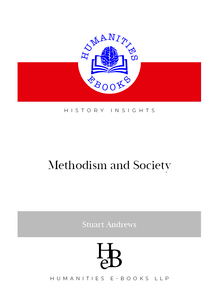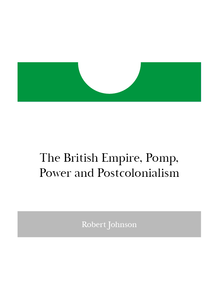-
 Univers
Univers
-
 Ebooks
Ebooks
-
 Livres audio
Livres audio
-
 Presse
Presse
-
 Podcasts
Podcasts
-
 BD
BD
-
 Documents
Documents
-
- Cours
- Révisions
- Ressources pédagogiques
- Sciences de l’éducation
- Manuels scolaires
- Langues
- Travaux de classe
- Annales de BEP
- Etudes supérieures
- Maternelle et primaire
- Fiches de lecture
- Orientation scolaire
- Méthodologie
- Corrigés de devoir
- Annales d’examens et concours
- Annales du bac
- Annales du brevet
- Rapports de stage
La lecture à portée de main
88 pages
English
Découvre YouScribe en t'inscrivant gratuitement
Je m'inscrisDécouvre YouScribe en t'inscrivant gratuitement
Je m'inscris
Obtenez un accès à la bibliothèque pour le consulter en ligne
En savoir plus
En savoir plus
88 pages
English
Obtenez un accès à la bibliothèque pour le consulter en ligne
En savoir plus
En savoir plus

Description
This book traces the emergence of Italy from the Congress of Vienna in 1815 through the Risorgimento to unification by 1871.
Sujets
Informations
| Publié par | Humanities eBooks |
| Date de parution | 11 janvier 2021 |
| Nombre de lectures | 0 |
| EAN13 | 9781847600622 |
| Langue | English |
Informations légales : prix de location à la page 0,0250€. Cette information est donnée uniquement à titre indicatif conformément à la législation en vigueur.
Extrait
History Insights General Editor: Martyn Housden
Running Head 1
TheRisorgimentoItaly 1815–71
Tim Chapman
‘‘We have made Italy, now we must make Italians.”
http//www.humanities-ebooks.co.uk For advice on use of this ebook please scroll to page
P D
© Tim Chapman, 2008
The Author has asserted his right to be identiîed as the author of this Work in accordance with the Copyright, Designs and Patents Act 1988.
Published byHumanities-Ebooks.co.uk Tirril Hall, Tirril, Penrith CA10 2JE
R O
*This book is designed to be read in single page view, using the ‘ît page’ command. *To navigate through the contents use the hyperlinked ‘Bookmarks’ at the left of the screen. *To search, click the magnifying glass symbol and select ‘show all re-sults’. *For ease of reading, use <CTRL+L> to enlarge the page to full screen, and return to normal view using < Esc >. *Hyperlinks (if any) appear in Blue Underlined Text. *For a computer generated reading go < View > < Read out Loud >. L
By purchasing this book you are licensed to read this work on-screen. No part of this publication may be otherwise reproduced or transmitted or dis-tributed without the prior written permission of both the copyright owner and the publisher. Making or distributing copies of this book constitutes copyright infringement and would be liable to prosecution. Thank you for respecting the rights of the author. You may print one copy of the book for your own use but copy and paste functions are disabled.
ISBN 978-1-84760-062-2
The Risorgimento: Italy 1815–71
Tim Chapman
History Insights. Tirril: Humanities-Ebooks, 2008
Contents
The Author
Chapter 1 Origins of the Risorgimento 1.1 Context 1.2 Eighteenth Century Origins 1.3 Impact of Napoleon Chapter 2 Italy in 1815 2.1 The Congress of Vienna 2.2 Society in 1815 2.3 The Economy c. 1815 2.4 Obstacles to Uniîcation Chapter 3 The Revolutions of 1820–21 3.1 The Revolution in Naples, 1820 3.2 Piedmont 3.3 Conclusions Chapter 4 The Revolutions of 1831 4.1 Parma and Modena 4.2 The Papal States 4.3 The Carbonari and Secret Societies Chapter 5 Mazzini
Chapter 6
Nationalist Writers
Chapter 7 The Revolutions of 1848–49 7.1 Causes 7.2 Piedmont and the War of 1848–49 7.3 Milan and the ‘Five Glorious Days’ 7.4 Venice: The Independent Republic of Saint Mark 7.5 Sicily and Naples
7.6 The Roman Republic of 1849 7.7 Conclusions Chapter 8 Piedmont c. 1850 8.1 Introduction 8.2 Piedmont before 1848 8.3 TheStatuto 8.4 Cavour’s Rise to Power Chapter 9 Piedmont’s Modernisation, 1850s 9.1 Introduction 9.2 The Piedmontese Economy c1850 9.3 Cavour’s Economic Policies 9.4 Anti-Church Policies 9.5 Cavour’s Diplomacy 1852–58 9.6 Republicanism after 1850 9.7 Napoleon III 9.8 Conclusion Chapter 10 War against Austria 1859 10.1 Plombières 1858 10.2 War against Austria 1859 10.3 Piedmont and the Duchies 10.4 Garibaldi 10.5 Garibaldi and Sicily 10.6 The Attack on the Mainland 10.7 The Role of Piedmont 1860 10.8 Conclusions Chapter 11 Italy in the 1860s 11.1 Towards Uniîcation in the 1860s 11.2 Venetia and Rome 11.3 How uniîed was Italy by 1870? 11.4 Conclusions Chapter 12 Historiography
Bibliography
TheRisorgimento
The Author
Tim Chapman is the author ofThe Congress of Vienna(1998) andImperial Russia(2001) as well as numerous articles for History magazines. He teaches at Wisbech Grammar School in Cambridgeshire.
Chapter 1
1.1
Context
Origins of the Risorgimento
The creation of the state of Italy has a reasonably clear înishing point in 1860. This was when most of the minor states that had previously existed in the peninsula joined together. They included Piedmont, Lombardy, the Papal States (except for Rome) and the Kingdom of Naples and Sicily. The formal declaration of the new Kingdom of Italy occurred on 17 March 1861. While there were subsequent additions of territory in 1866 (Venetia), 1870 (Rome) and 1919 (Alto Adige or southern Tyrol) Italy had been largely uniîed by 1860. The origins of uniîcation are much less clear. Contemporaries took quite differ-ent views as to the beginning of the route to uniîcation and historians have debated it since. In part, the debate has been made more complicated by the use of two simi-lar but signiîcantly different terms;Risorgimentoand uniîcation. The Italian word ‘Risorgimentobeen commonly used to describe how the situation of 1860 had’ has been achieved whereas, strictly, it refers to a revival or ‘resurgence’ of national life in Italy. This was what Italian nationalists—writers, artists and thinkers—wanted for their country. It amounted to much more than mere uniîcation: it was about a return of Italy’s national strength in which its people felt pride in their country. It alluded to Italy’s glorious and prestigious past in the form of the Roman Empire and to cultural achievements such as the Renaissance. Uniîcation when it occurred, though, was much more narrowly based. It was achieved despite a largely passive population and through the efforts of political lead-ers through their wars and diplomacy. Foreign states contributed enormously to the process by direct intervention or their willingness simply to stand aside. Territory was traded and fought over with little regard to the inhabitants’ wishes such that the vast majority of the population of the peninsula called ‘Italy’ hardly considered them-selves ‘Italian’ either at the beginning or the end of the process. The sometimes clini-cal and Machiavellian diplomacy that was employed to achieve uniîcation was a far cry from what the writers had hoped for. And a clear demonstration of how disunited the population was can be seen in the years immediately after 1860 when the southern
TheRisorgimento 8
half of the peninsula rebelled and the country declined into civil war. The way in which Italy’s route to uniîcation occurred in practice, and the desire amongst some for aRisorgimento, meant that the two became entangled. This has therefore made it difîcult to give a clear and deînite starting point; certainly, a pin-point date has proved elusive.
1.2
Eighteenth Century Origins
The beginning of theRisorgimentohas been placed by many historians in the eight-eenth century. Beales points out that ‘Nationalism cannot be found in Italy in the 1 middle of the eighteenth century’. Coppa, by contrast, suggests that by the end of the 2 century it was beginning to take root. Much attention has been given to the writings of Vittorio Alîeri who was a Piedmontese nobleman and who was îrst to use the term ‘Risorgimento’. He wrote plays in the 1780s and 1790s which were both successful and patriotic; as such, they received a fairly wide audience. They were written in the Tuscan type of Italian—the ofîcial form of the language—but he also wrote political tracts designed to raise increase Italian patriotism. In 1784, he wrote inThe Prince and Literature, ‘this small peninsula is still the same as that which previously con-quered nearly all of the then known world’ in reference to the achievements of the Roman Empire. ‘And it was still the same Italy which a few centuries later enlight-ened the rest of Europe with the arts and sciences’ he continued, indicating how it was 3 Italy that began the Renaissance. A second writer of signiîcance in this period was Carlo Denina, a historian. His unique contribution was to write a history of Italy; this was new since previous histo-rians had looked at the history of Venice or of city states such as Florence which were localised. Writing a ‘national’ history was innovative and implied a common experi-4 ence and identity. Some historians have continued the pattern of writing regional his-5 tories along side the national one in recognition of the states’ separateness. However, the impact of these early ideas was necessarily limited and marked out a pattern for the future. The penetration of the writers’ ideas was restricted, at best, to the educated élite. Censorship and printing restrictions muted Denina’s efforts, although Alîeri
2 4
D. Beales,The Risorgimento and the Uniîcation of Italy(London: George Allen and Unwin, 97), 2. F. Coppa,The Origins of the Italian Wars of Independence(London: Longman, 992), . V. Alîeri,The Prince and Literature(774). Denina,Revolutions of Italy(Venice: 779). H. Hearder,Italy in the Age of the Risorgimento(London: Pearson, 98).
-
 Univers
Univers
-
 Ebooks
Ebooks
-
 Livres audio
Livres audio
-
 Presse
Presse
-
 Podcasts
Podcasts
-
 BD
BD
-
 Documents
Documents
-
Jeunesse
-
Littérature
-
Ressources professionnelles
-
Santé et bien-être
-
Savoirs
-
Education
-
Loisirs et hobbies
-
Art, musique et cinéma
-
Actualité et débat de société
-
Jeunesse
-
Littérature
-
Ressources professionnelles
-
Santé et bien-être
-
Savoirs
-
Education
-
Loisirs et hobbies
-
Art, musique et cinéma
-
Actualité et débat de société
-
Actualités
-
Lifestyle
-
Presse jeunesse
-
Presse professionnelle
-
Pratique
-
Presse sportive
-
Presse internationale
-
Culture & Médias
-
Action et Aventures
-
Science-fiction et Fantasy
-
Société
-
Jeunesse
-
Littérature
-
Ressources professionnelles
-
Santé et bien-être
-
Savoirs
-
Education
-
Loisirs et hobbies
-
Art, musique et cinéma
-
Actualité et débat de société
- Cours
- Révisions
- Ressources pédagogiques
- Sciences de l’éducation
- Manuels scolaires
- Langues
- Travaux de classe
- Annales de BEP
- Etudes supérieures
- Maternelle et primaire
- Fiches de lecture
- Orientation scolaire
- Méthodologie
- Corrigés de devoir
- Annales d’examens et concours
- Annales du bac
- Annales du brevet
- Rapports de stage
Signaler un problème
YouScribe
Le catalogue
Le service
© 2010-2024 YouScribe











